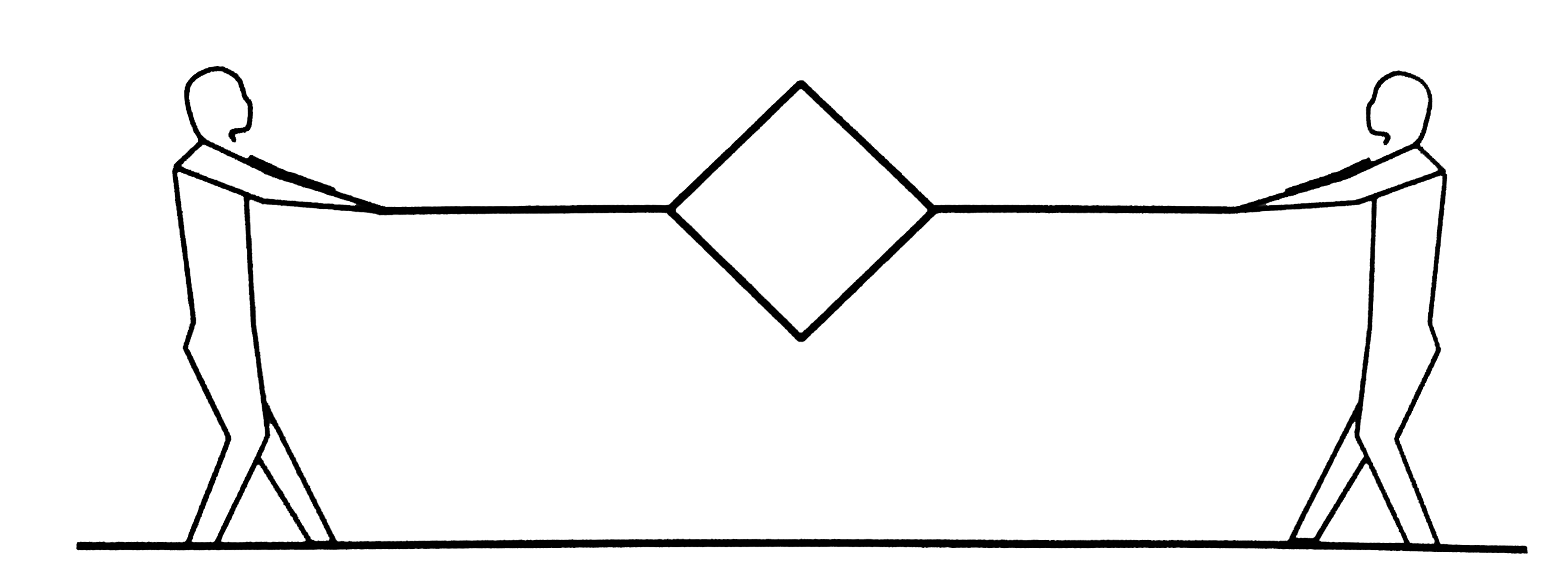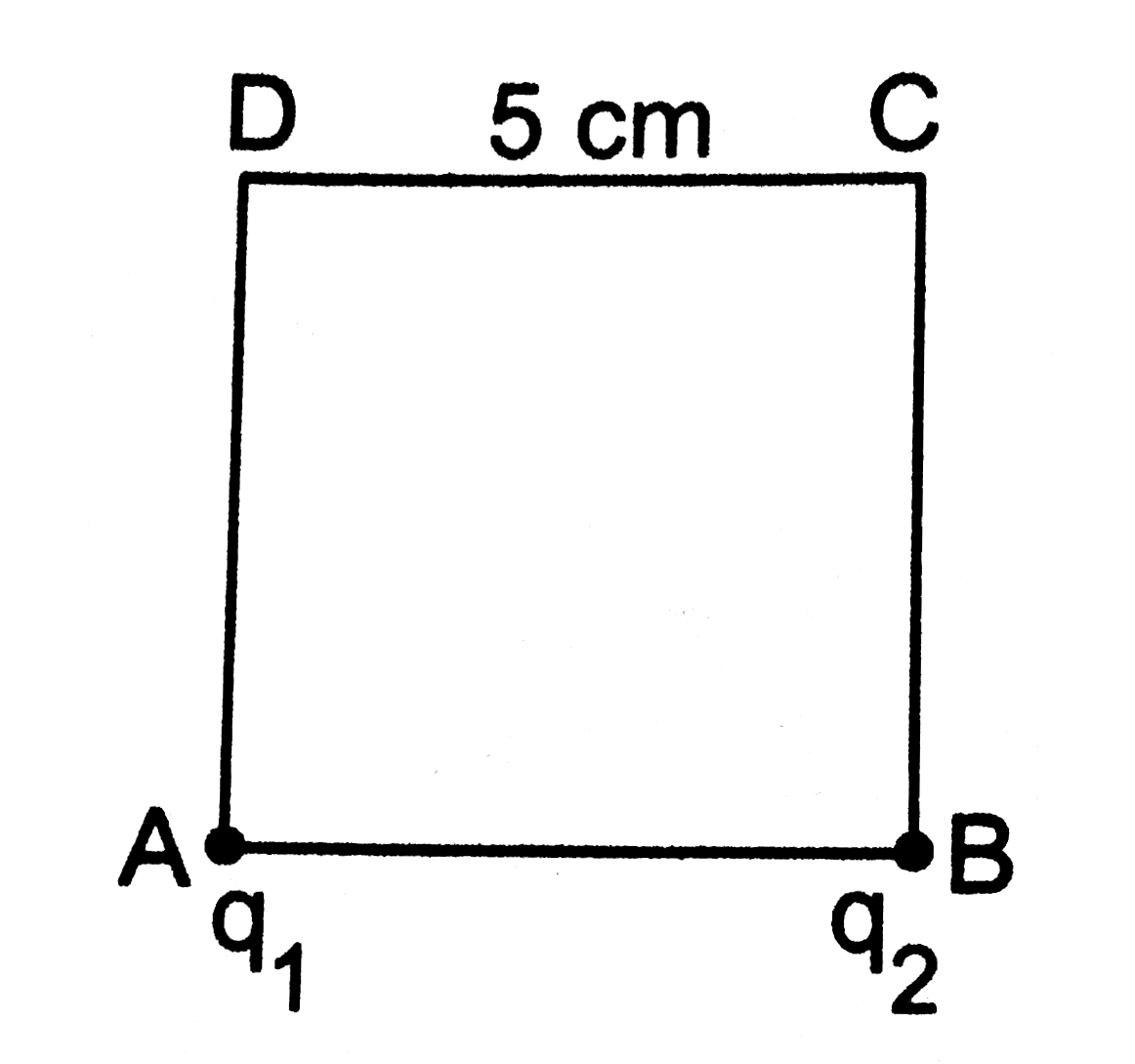Suppose the second charge in the previous problem is −1.0×10−6C. Locate the position where a third charge will not experience a net force. Solution in Gujrati
q1=2×10−6C
q2=−1×10−6C
R=10cm=10×10−2m,
Letthethirdchar≥be'a'
So,Fac=−Fbc
⇒2c2=(10+c)2
c=24.14
So distance of charge placed at x
=(24.14+10)=34.14cm
from larger charge.
Topper's Solved these Questions
- BOOK - HC VERMACHAPTER - ELECTRIC FIELD AND POTENTIALEXERCISE - Objective 28videos
ELECTRIC FIELD AND POTENTIAL
- BOOK - HC VERMACHAPTER - ELECTRIC CURRENT THROUGH GASESEXERCISE - Exercises23videos
ELECTRIC CURRENT THROUGH GASES
- BOOK - HC VERMACHAPTER - ELECTROMAGNETIC INDUCTIONEXERCISE - EXERCISE9videos
ELECTROMAGNETIC INDUCTION
Similar Questions
Mark out the correct potons.
05:21View SolutionA discharge tube contains helium at a low pressure. A large potential difference is applied across the tube. Consider a helium atom that has just been ionized due to the detachment of an atomic electron. Find the ratio of the distance travelled by the free electron to that by the positive ion in a short time dt after the ionization.
05:18View SolutionShown a metallic square frame of edga a in a vertical plane. A uniform magnetic field B exists in the space in a directon perpendicular to the plane of the figure. Two boys pull the opposite corners of the square ot deform it into a rhombus. They start pulling the corners t t=0 and sisplace the corners at a uniform speed u. (a) find the induced emf in the frame at the instant when the angles at these corners reduce to 60∘. (b) find the induced current in the frame at this instatnt if the total resistance of the frame is R. (c) Find the total charge which flows through a side of the frame by the time the square is deformed into a straight line.
 04:38View Solution
04:38View SolutionTwo particles A and B having charges 8.0×10−6C and −2.0×10−6C respectively are held fixed with a. separation of 20cm. Where should a third charged. particle be placed so that it dose not experience a net electric force?.
05:43View Solutioncharges 2.0×10−6C and 1.0×10−6C are placed at. corners A and B of a squae of side 5.0cm as shown in. figure .how much work will be done against. the electric field in moving a charge of 1.0 xx 10^(-6) C from. C to D?.
 02:20View Solution
02:20View SolutionTwo chargea 2.0xx10^(-6) C are placed at a separation of 10 cm. where should a third charge be placed such that it experiences no net force due to these charges.
02:15View SolutionSuppose the second charge in the previous problem is −1.0×10−6C. Locate the position where a third charge will not experience a net force.
02:51View Solutionएक विद्युत द्विध्रुव में +1.0×10−6C तथा −1×10−6C के दो बिन्दु आवेश एक-दूसरे से 2 cm की दूरी पर स्थित है। यह विद्युत द्विधुव 1.0×105 V/m के समरूप विद्युत क्षेत्र में स्थित है। ज्ञात करो-
द्विध्रुव पर विद्युत क्षेत्र द्वारा लगने वाला अधिकतम बलाघूर्ण |04:28View Solutionएक विद्युत द्विध्रुव में +1.0×10−6C तथा −1×10−6C के दो बिन्दु आवेश एक-दूसरे से 2 cm की दूरी पर स्थित है। यह विद्युत द्विधुव 1.0×105 V/m के समरूप विद्युत क्षेत्र में स्थित है। ज्ञात करो-
द्विध्रुव पर स्थायी सन्तुलन की स्थिति में स्थितिज ऊर्जा |07:42View SolutionA charge +q is located at the origin, while an identical charge is located on the x axis at x = +0.50 m. A third charge of +2 q is located on the x axis at such a place that the net electrostatic force on the charge at the origin doubles, its direction remaining unchanged. Where should the third charge be located ?
05:30View SolutionTwo particles A and B having charges 8.0×10−6C and −2.0×10(−6)C respectively are held fixed with a. separtion of 20cm. Where should a thired charged. particle be placed so that it dose not experience a net electric force?.
05:39View Solutioncharges 2.0×10−6C and 1.0×10−6C are placed at. corners A and B of a squae of side 5.0cm as shown in. figure .how much work will be done against. the electric field in moving a charge of 1.0 xx 10^(-6) C from. C to D?.
 03:28View Solution
03:28View SolutionTwo chargea 2.0×10−6C and 1.0×10−6C are placed at a separation of 10 cm. where should a third charge be placed such that it experiences no net force due to these charges.
05:34View SolutionSuppose the second charge in the previous problem is −1.0×10−6C. Locate the position where a third charge will not experience a net force.
04:52View SolutionTwo point charges 3×10–6C and 8×10–6C repel each other by a force of 6×10–3 N. If each of them is given an additional charge – 6×106 C, the force between them will be
05:56View SolutionTwo particles A and B having charges 8.0×10−6C and −2.0×10(−6)C respectively are held fixed with a. separtion of 20cm. Where should a third charged. particle be placed so that it dose not experience a net electric force?.
02:16View Solution

